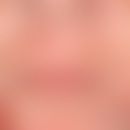Synonym(s)
DefinitionThis section has been translated automatically.
Second most common form of urticaria, which occurs after physical, mental or thermal stress with apparently increased sensitivity to acetylcholine. This form of urticaria is often combined with other types of urticaria or food allergies.
PathophysiologyThis section has been translated automatically.
Although the pathophysiology of exercise-induced urticaria and anaphylaxis is not well understood, thermoregulatory mechanisms and an exaggerated cholinergic response are likely to play a role (Casale TB et al. 1986). A temperature rise of more than 0.7 °C, mast cell degranulation, and an increase in plasma histamine levels are thought to be responsible for the symptoms (Casale TB et al. 1986).
You might also be interested in
ManifestationThis section has been translated automatically.
Women are preferentially affected. Typical is the first appearance in young adulthood.
LocalizationThis section has been translated automatically.
ClinicThis section has been translated automatically.
After relevant physical exertion associated with sweating, but also after hot showers or baths, and less frequently after emotional stress, a disseminated, urticarial, pruritic exanthema occurs on the trunk (predilection site) and extremities.
In contrast to other forms of urticaria, the wheals are usually small in size, barely 0.1-0.2 cm in diameter, but may also confluent into larger areas and tend to be more acute than flat, inital follicularly bound wheals. The follicular attachment is lost after somewhat prolonged persistence. The urticæ are usually surrounded by reflex erythema, but may also have a blunted halo. Patients usually report vigorous pruritus.
DiagnosisThis section has been translated automatically.
See also Physical Urticaria.
Provocation tests include hot half-body full baths (40-41 °C for 10-20 minutes), double-sided arm baths (40-44 °C for 20-25 minutes), climbing stairs and hot tea until you sweat. Food allergies must be clarified clinically and in the laboratory.
General therapyThis section has been translated automatically.
Prophylaxis is also therapy! Avoidance of emotional stress situations and strong physical strain. No sweaty foods or stimulants such as alcohol, coffee, tea.
The refractory phase (exhaustion phase of the mast cells) can be used to induce tolerance, i.e. the patients can be instructed to regularly expose themselves to stimuli that do not cause severe symptoms. Light physical work in the sense of hardening. In the case of deliberate sporting activities, an attempt can be made to "undermine" the critical inductive threshold. S.a. Urticaria, physical. S.a. Casuistry.
Cooperation with psychotherapists is useful.
External therapyThis section has been translated automatically.
Symptomatically with anti-itching Lotio alba aquosa, if necessary with addition of 2-5% Polidocanol R200 or 1% menthol solution.
Alternatively:Glucocorticoid-containing creams or lotions such as 0.5-2% hydrocortisone cream or lotion R123 R120.
Antihistamine-containing gels (e.g. Fenistil, Tavegil, Soventol) are often of little help.
Radiation therapyThis section has been translated automatically.
Internal therapyThis section has been translated automatically.
Successes with desloratadine (e.g. Aerius) 5-10 mg/day p.o., cetirizine (e.g. Zyrtec) 10 mg/day p.o. or levocetirizine (e.g. Xusal) 10 mg/day p.o. have been described. If necessary, the antihistamines must be "overdosed" for therapeutic reasons (e.g., cetirizine 20 mg/day p.o.). - Remark: this suggestion is only realistic for a limited time. In the long term, it is rather impractical.
For sedating antihistamines, the drug of 1st choice is hydroxyzine (e.g. Atarax 1-3 tbl./day p. o.).
- Alternatively: dimetindene (e.g. Fenistil 2 times/day 1 drg. p. o.) or clemastine (e.g. Tavegil 2 times/day 1 tbl. p. o.).
Mast cell stabilizers: On average, the mast cell stabilizer ketotifen (e.g. Zaditen) achieves a good effect on itching and wheal formation, initially 1 mg/day for 3-4 days, then increase to 1 mg 2 times/day and later to 2 mg 2 times/day p.o..
Danazol (e.g., Danadrol [available through international pharmacy]) has also been used successfully, 100-600 mg/day p. o., later 100-300 mg/day p. o., maintenance or continuous. Under 200 mg/day, complete regression of pruritus occurs.
Alternatively, parasympatholytic drugs such as secalealkaloids (e.g., dihydroergotamine 2 times/day 2.5 mg p. o.) may be tried.
Alternatively, additional benzodiazepines such as oxazepam may be used (e.g., Adumbran) 25-50 mg/day.
Alternatively, if all therapy attempts fail, a trial with the anti-IgE antibody omalizumab (Xolair; 300 mg/14 days s. c.) is worth considering.
Progression/forecastThis section has been translated automatically.
The average duration of cholinergic urticaria is 7.5 years. Progression over several decades has been described.
Note(s)This section has been translated automatically.
The clinical picture does not always manifest itself as full-blown urticaria. It can also occur in a reduced form as cholinergic pruritus or in an extreme variant as"excercise-induced anaphylaxis" (see below shock, anaphylactic).
Case report(s)This section has been translated automatically.
The patient was a 27-year-old German man with no significant previous medical history who presented with what he described as a "training-induced rash." He had first noticed an itchy rash while playing soccer at the age of eight. Since then, he developed recurrent itchy exanthema on his arms during every soccer practice, "which significantly limited his physical activity." At age 22, marked exacerbation of symptoms. After intensive running training, generalized urticaria developed within 20 minutes, "lasting about two hours and then resolving spontaneously." No swelling of the lips or tongue; no difficulty swallowing or breathing. The urticaria occurred during exercise, regardless of any food intake before exercise.
Findings: In the absence of an acute episode, the patient's physical examination was unremarkable. An exercise test was performed (under clinical conditions) in which the patient completed a combination of running, stair climbing, and knee bending. Within 10 minutes, he began to sweat. At the same time, erythema appeared. Twenty minutes after the start of exercise, a pruritic urticarial rash appeared on the flexor arms, neck, chest, and abdomen. No respiratory distress; no signs of angioedema or anaphylaxis. Vital signs before and after the exercise test showed a 0.4°C increase in temperature and a 30% increase in heart rate from baseline.
Therapy: Rather than absolutely abstaining from exercise, the patient opted to switch to low-intensity exercise as part of a shared decision-making process. The patient was advised at the initial and follow-up visits to take oral antihistamines before any exercise; however, he preferred to forgo medication. With the gradual change in exercise, the patient was now able to walk and swim for an hour without triggering urticarial symptoms.
LiteratureThis section has been translated automatically.
- Adachi J et al (1994) Demonstration of sweat allergy in cholinergic urticaria. J Dermatol Sci 7: 142-149
- Berth-Jones J et al (1989) Cholinergic pruritus, erythema and urticaria: a disease spectrum responding to danazol. Br J Dermatol 121: 235-237
- Fukunaga A et al (2018) Cholinergic urticaria: epidemiology, physiopathology, new categorization, and
- management. Clin Auton Res 28:103-113.
- Kobayashi H et al (2002) Cholinergic urticaria, a new pathogenic concept: hypohidrosis due to interference with the delivery of sweat to the skin surface. Dermatology 204: 173-178
- Lee EE et al (2001) Treatment of urticaria. An evidence-based evaluation of antihistamines. At J Clin Dermatol 2: 27-32
- McClean SP et al (1990) Refractory cholinergic urticaria successfully treated with ketotifen. J Allergy Clin Immunol 83: 738-741
- Montgomery SL (2015) Cholinergic urticaria and exercise-induced anaphylaxis. Curr Sports Med Rep 14:61-63.
- Olafsson JH et al (1986) Treatment of chronic urticaria with PUVA or UV-A plus placebo: a double blind study. Arch Dermatol Res 278: 228-231
- Ring J et al (2001) Desloratadine in the treatment of chronic idiopathic urticaria. Allergy 56(Suppl 65): 28-32
- Tsunemi Y et al (2003) Cholinergic urticaria successfully treated with scopolamine butylbromide. Int J Dermatol 42: 850
Incoming links (19)
Anaphylactic shock; Cholinergic urticaria; Cow's milk allergy; Exercise urticaria; Exercise urticaria; Hydrocortisone cream 0.5-2.0% (w/o); Hydrocortisone emulsion hydrophilic 0.5-1; Menthol solution 1%; Omalizumab; Polidocanol zinc oxide shaking mixture 3/5 or 10% (nrf 11.66.) [white/skin coloured].; ... Show allOutgoing links (29)
Anaphylactic shock; Antihistamines, systemic; Benzodiazepines; Cetirizine; Clemastine; Cream; Danazol; Desloratadine; Dimetinden; Food allergy; ... Show allDisclaimer
Please ask your physician for a reliable diagnosis. This website is only meant as a reference.











